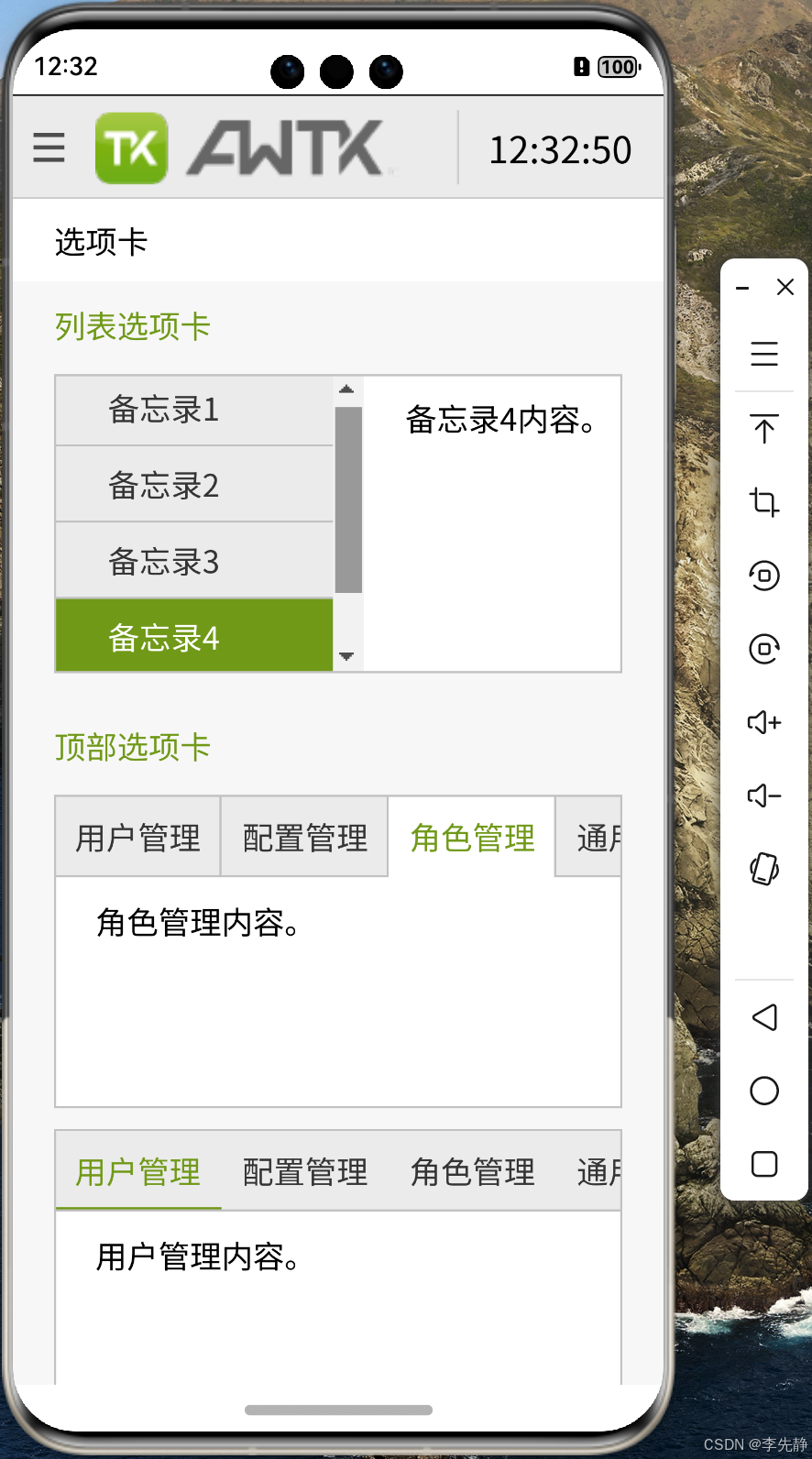AWTK 作为一个GUI引擎,自然少不了对触屏事件的支持。这里我们先支持单点触摸,后续再支持多点手势。
1. 注册 XComponent 的触屏事件回调
这个在 AppNapi 的构造函数中完成:
cpp
AppNapi::AppNapi(std::string &id) {
id_ = id;
component_ = nullptr;
auto appCallback = AppNapi::GetNXComponentCallback();
appCallback->OnSurfaceCreated = OnSurfaceCreatedCB;
appCallback->OnSurfaceChanged = OnSurfaceChangedCB;
appCallback->OnSurfaceDestroyed = OnSurfaceDestroyedCB;
appCallback->DispatchTouchEvent = DispatchTouchEventCB;
auto appMouseEventCallback = AppNapi::GetNXComponentMouseEventCallback();
appMouseEventCallback->DispatchMouseEvent = DispatchMouseEventCB;
awtk_app_ = new AwtkApp(id);
}2. 在触屏事件的回调函数中,将事件分发给 awtk_app
事件需要根据当前屏幕的缩放比例,转换为 awtk 的坐标系。
cpp
void AppNapi::DispatchTouchEvent(OH_NativeXComponent *component, void *window) {
int32_t ret = OH_NativeXComponent_GetTouchEvent(component, window, &touchEvent_);
if (ret == OH_NATIVEXCOMPONENT_RESULT_SUCCESS) {
double dpr = awtk_app_->GetDevicePixelRatio();
int x = touchEvent_.x / dpr;
int y = touchEvent_.y / dpr;
int button = 0;
switch (touchEvent_.type) {
case OH_NATIVEXCOMPONENT_DOWN: {
awtk_app_->DispatchPointerDown(button, x, y);
break;
}
case OH_NATIVEXCOMPONENT_MOVE: {
awtk_app_->DispatchPointerMove(button, x, y);
break;
}
case OH_NATIVEXCOMPONENT_UP: {
awtk_app_->DispatchPointerUp(button, x, y);
break;
}
default: {
break;
}
}
} else {
LOGE("Touch fail");
}
}3. 将事件注入主循环
cpp
void AwtkApp::DispatchPointerDown(int button, int x, int y) {
mPressed = true;
pointer_event_t event;
widget_t *widget = window_manager();
pointer_event_init(&event, EVT_POINTER_DOWN, widget, x, y);
event.pressed = mPressed;
event.button = button;
event_queue_req_t r;
memset(&r, 0x00, sizeof(r));
r.pointer_event = event;
main_loop_queue_event(main_loop(), &r);
}4. 加入触屏事件支持后,就可以通过触屏操作界面了
